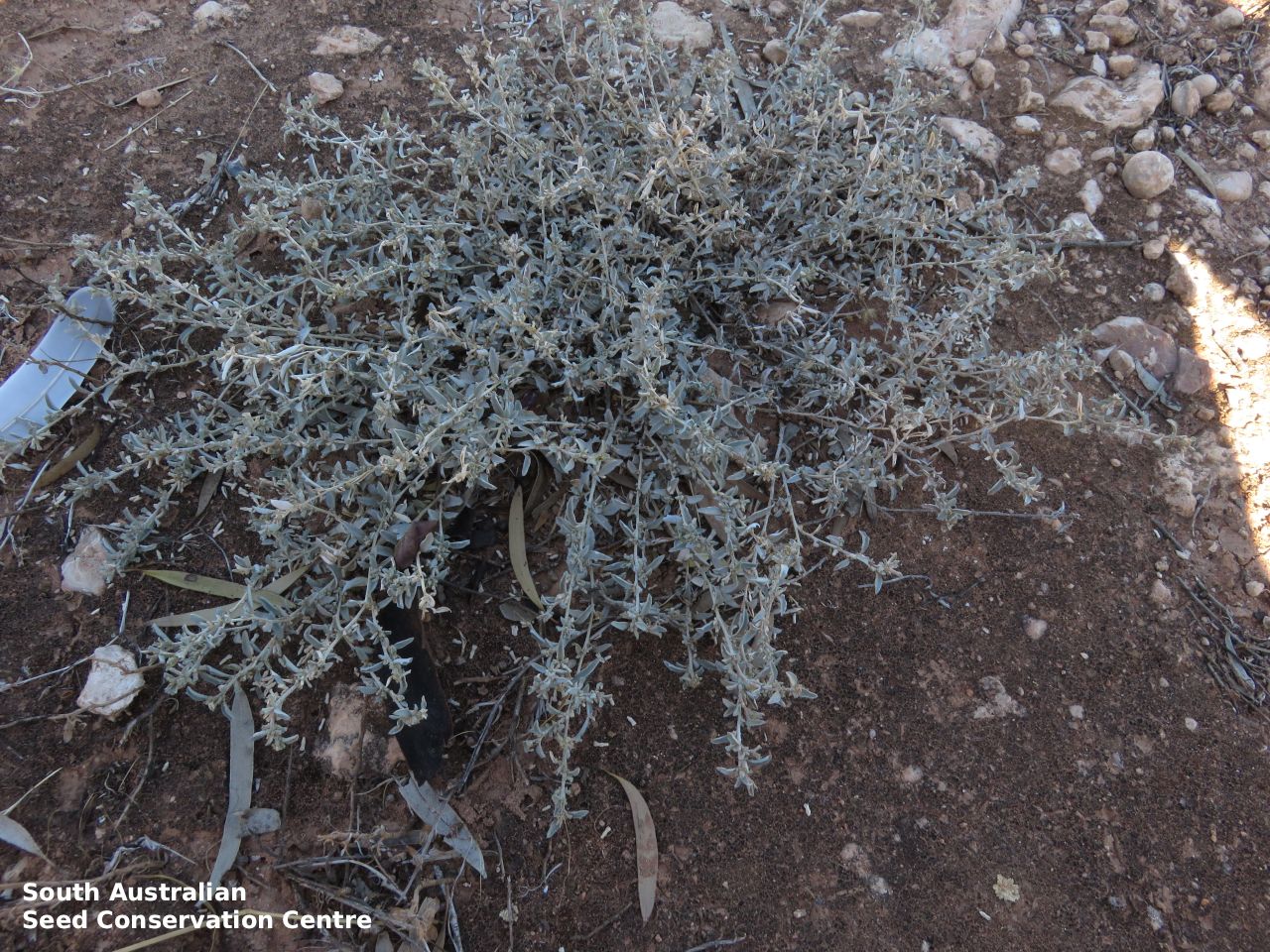
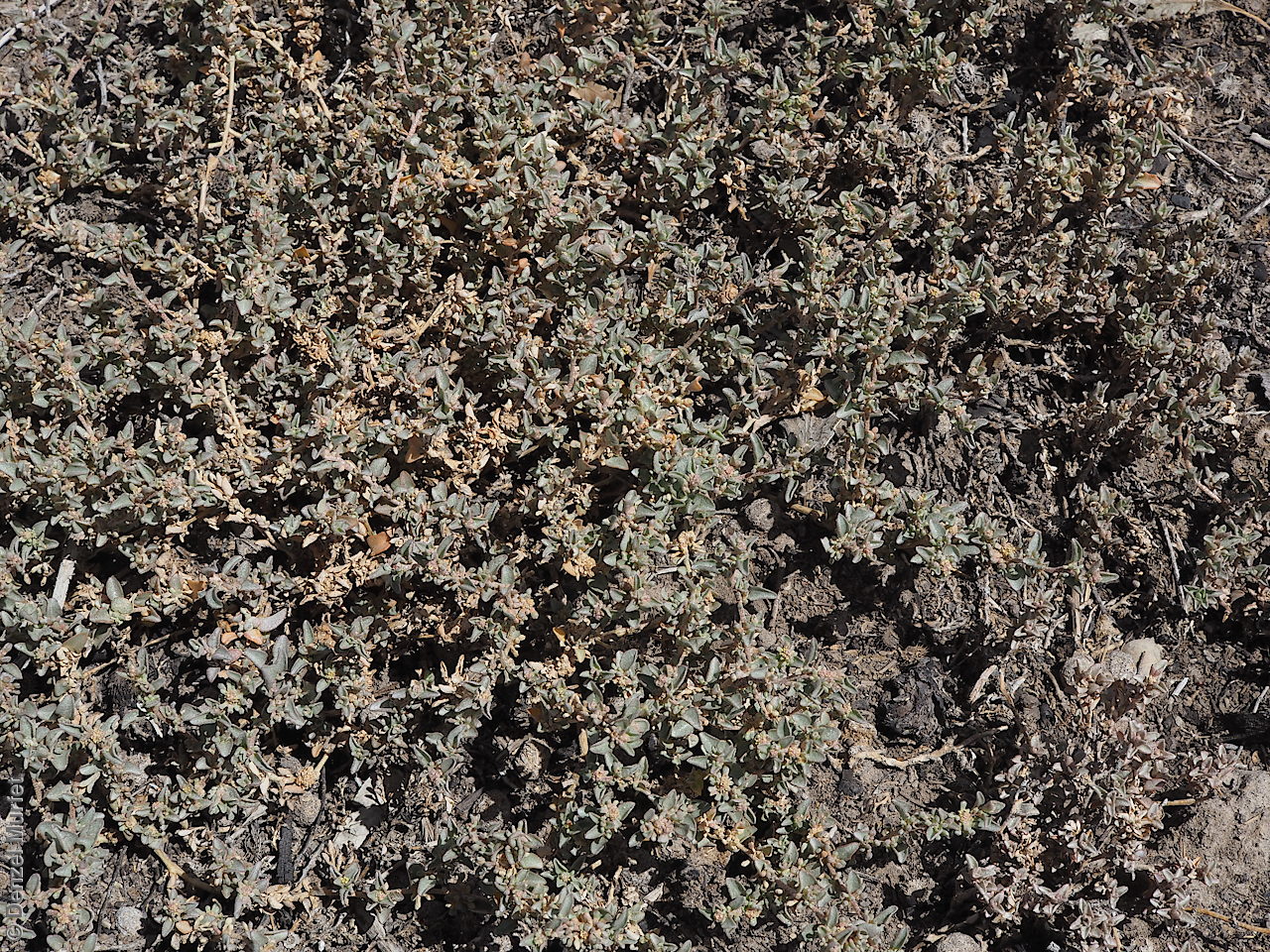
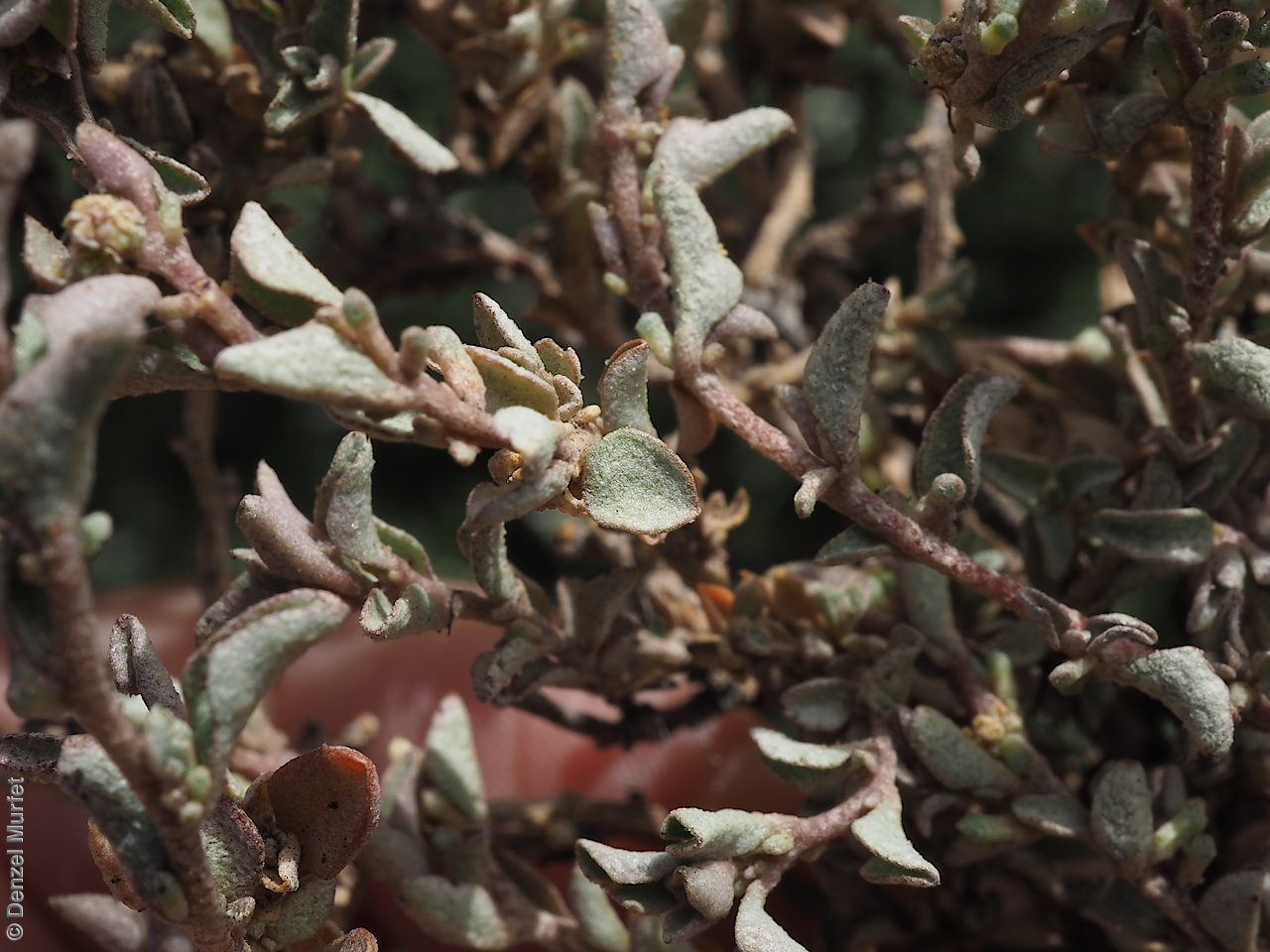
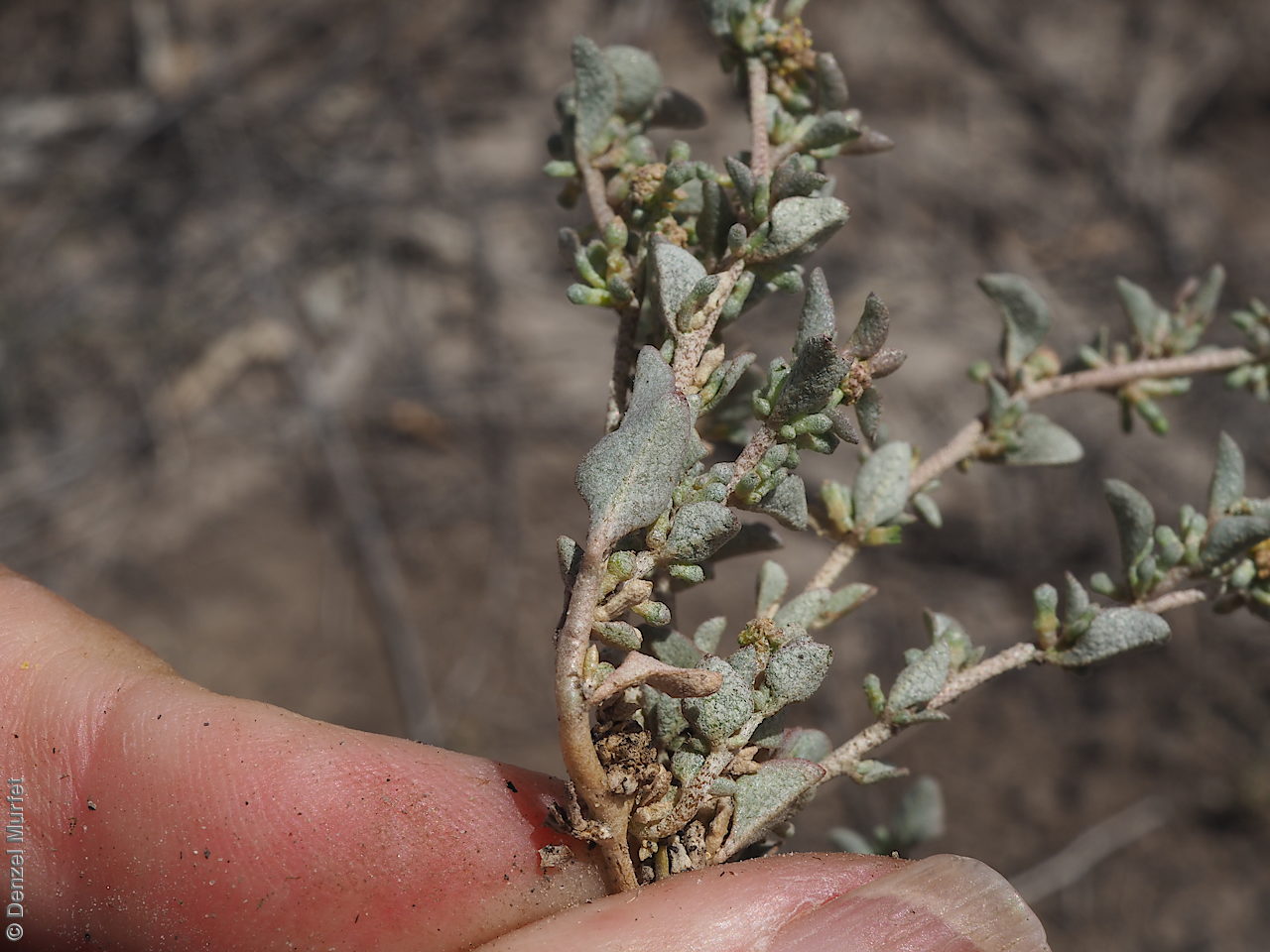
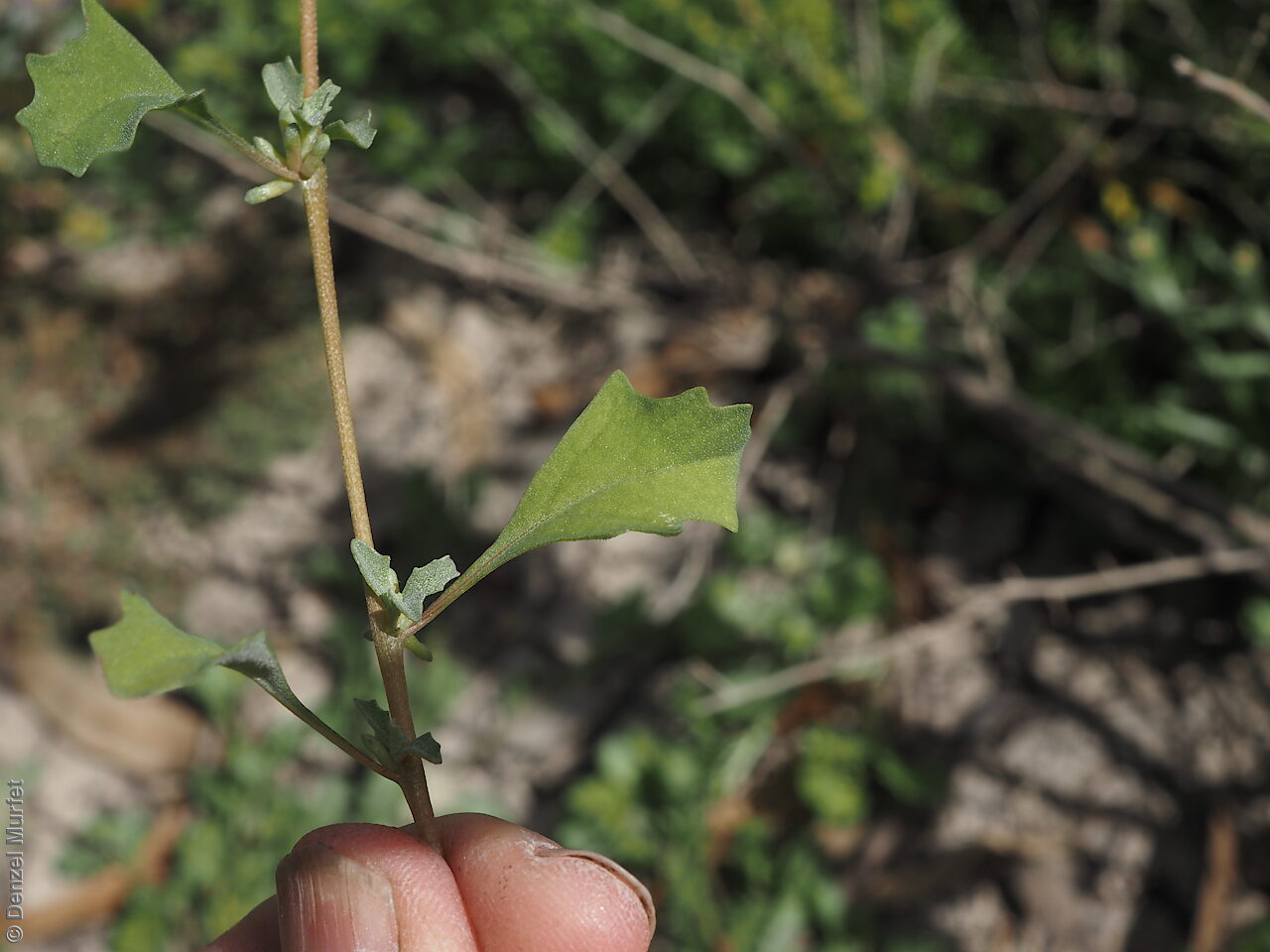
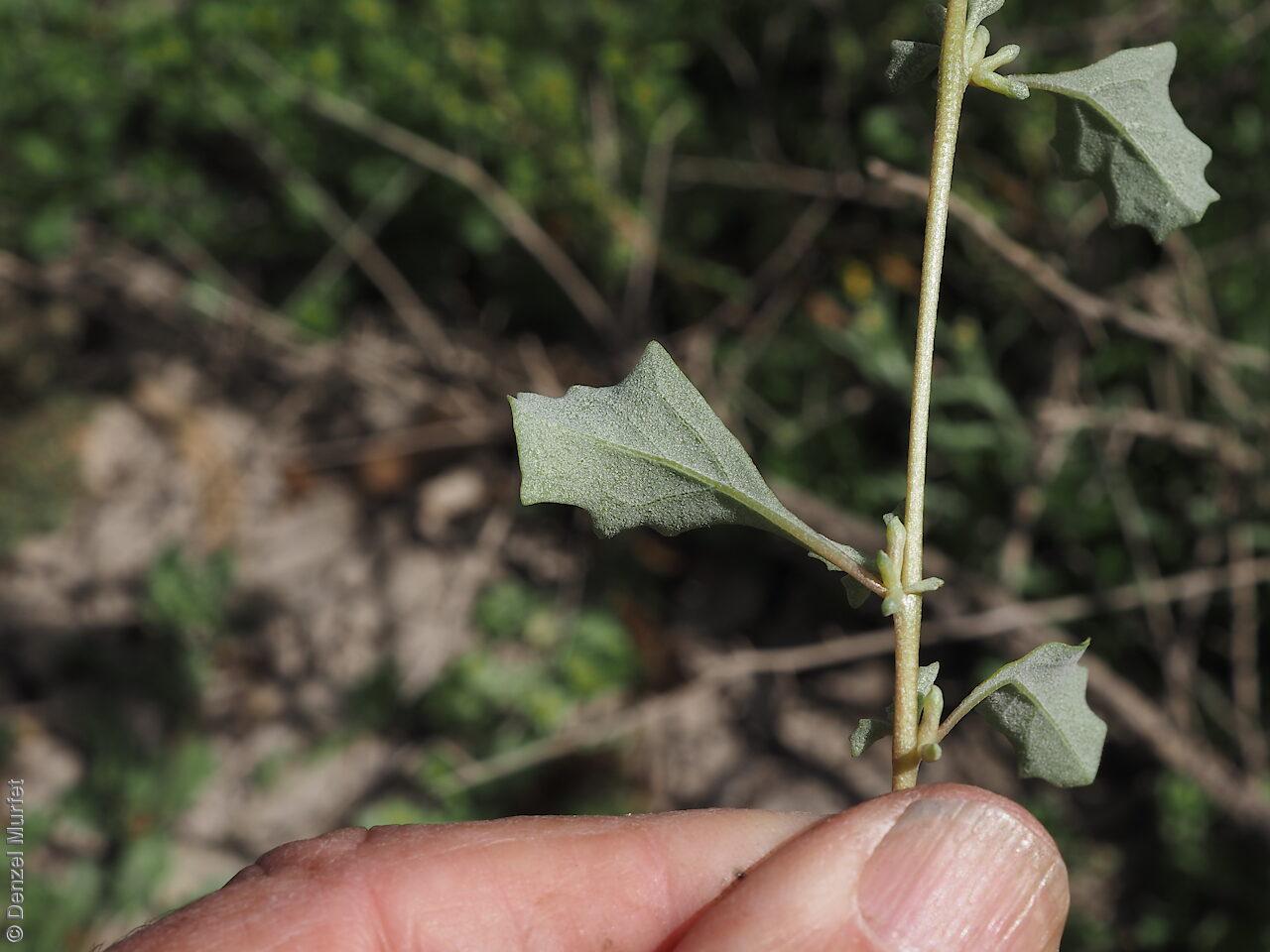
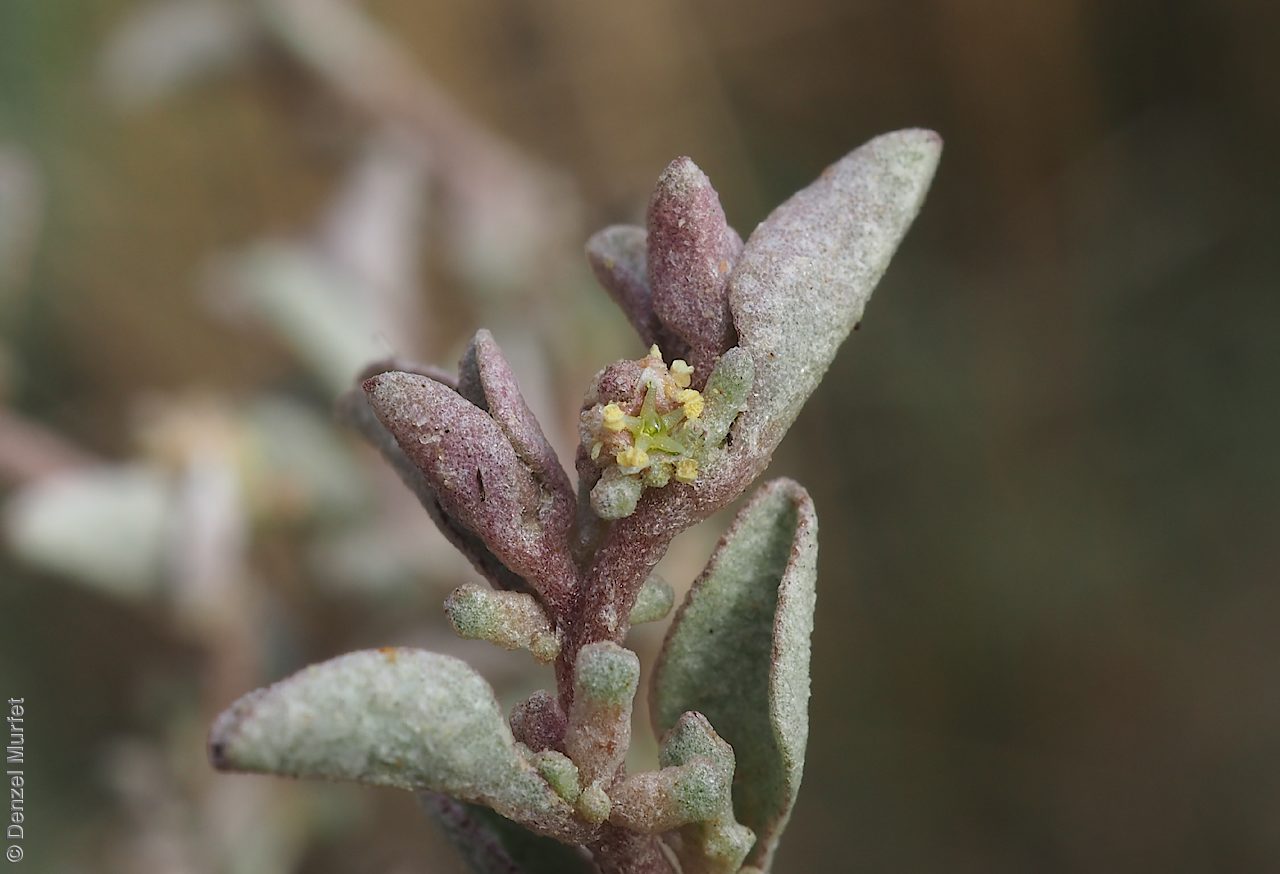
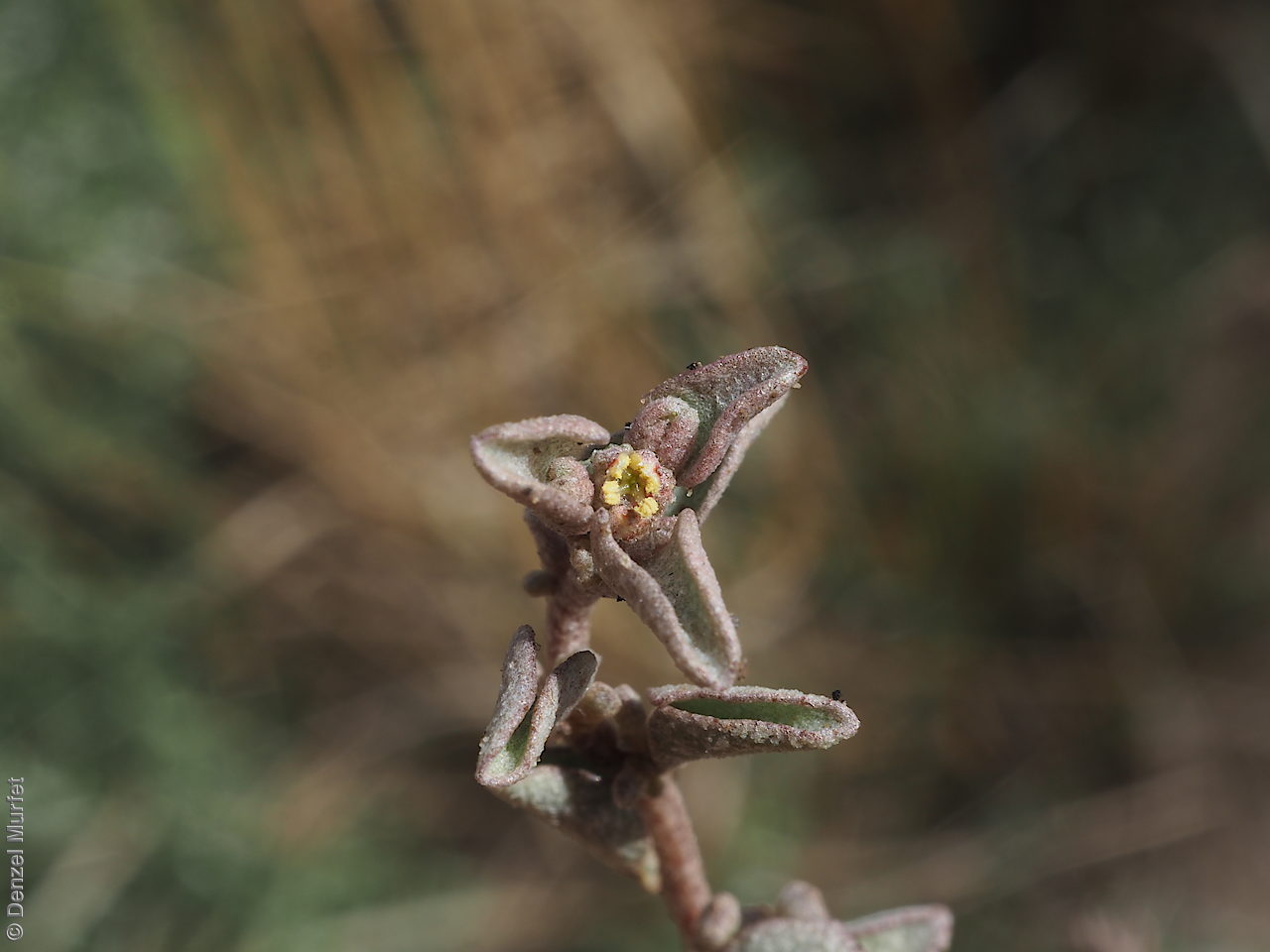
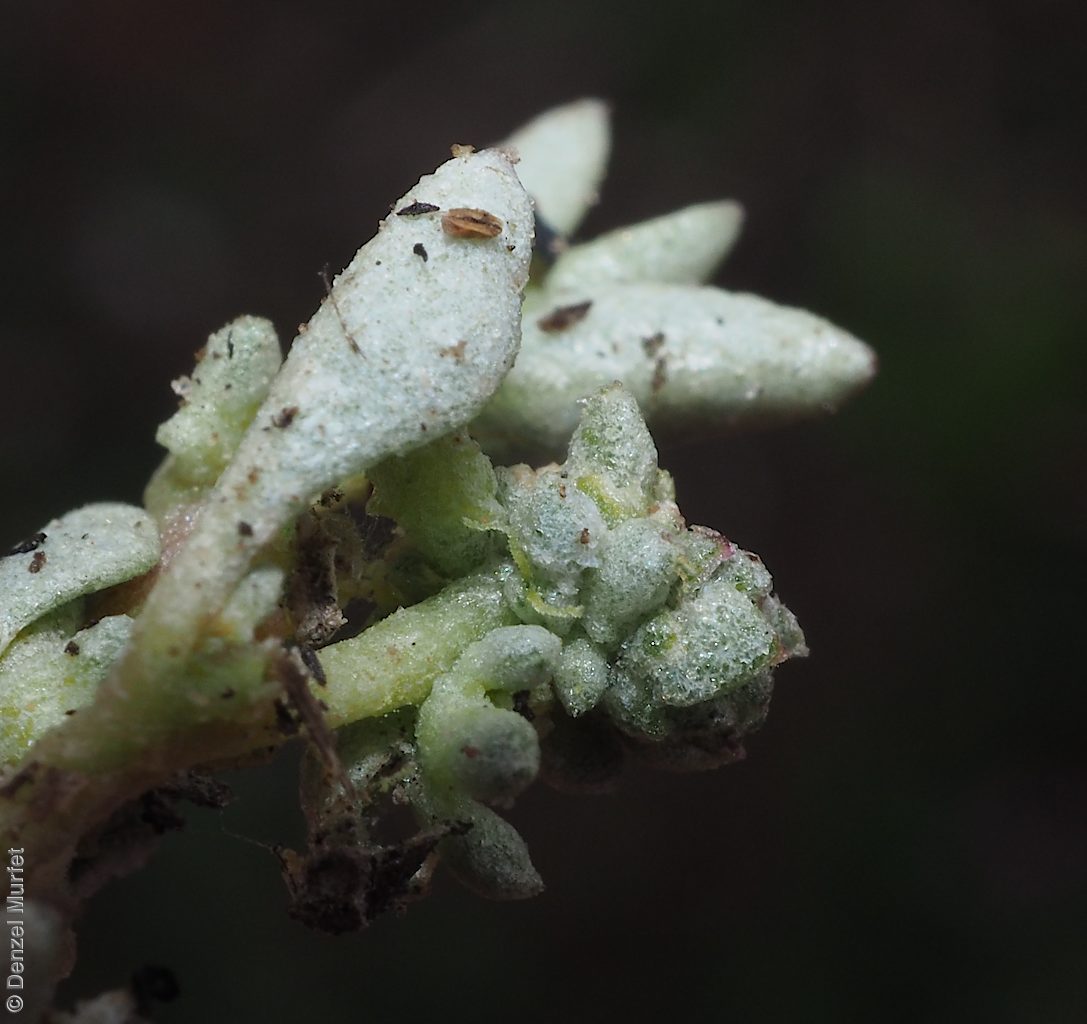
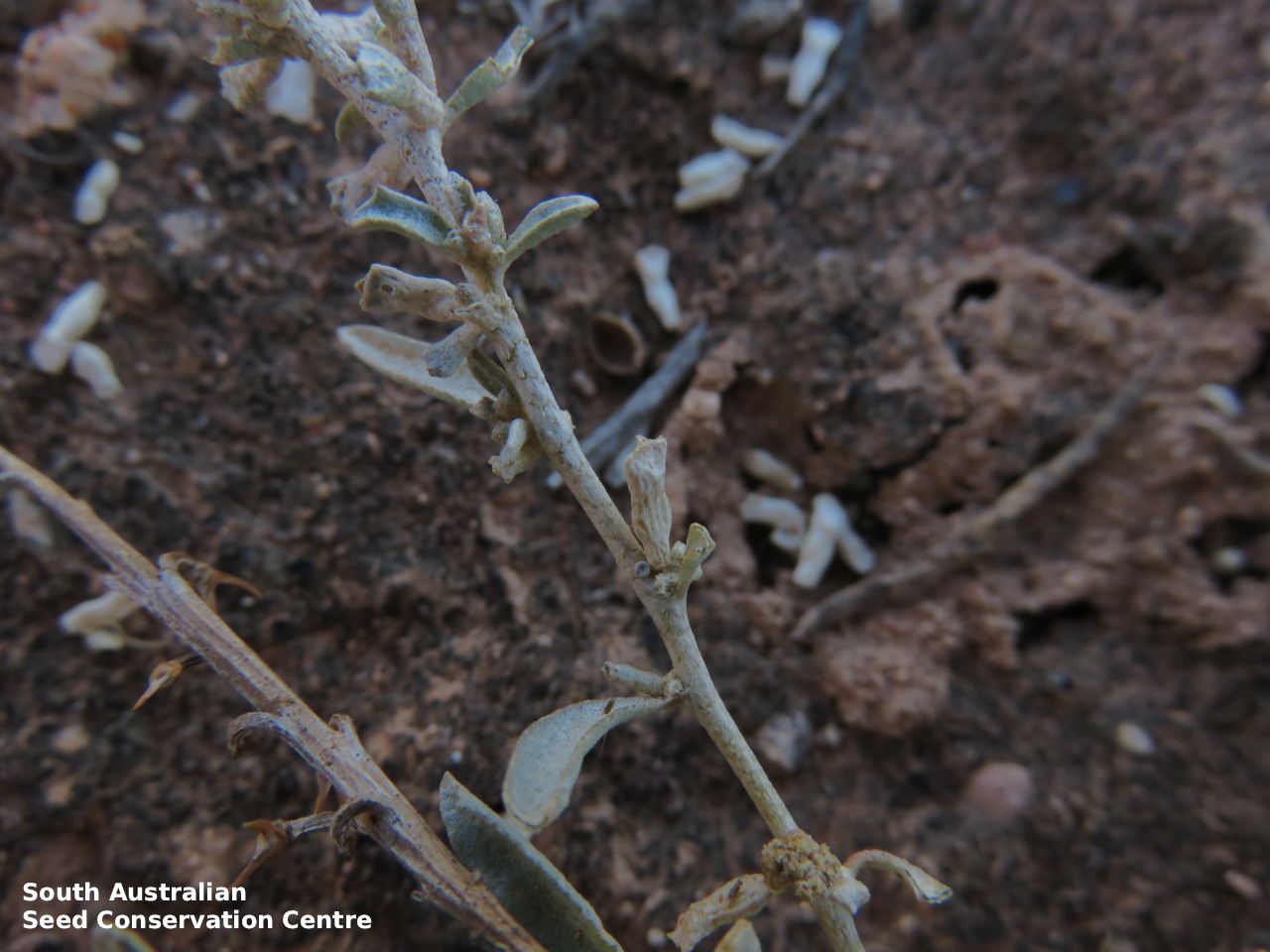
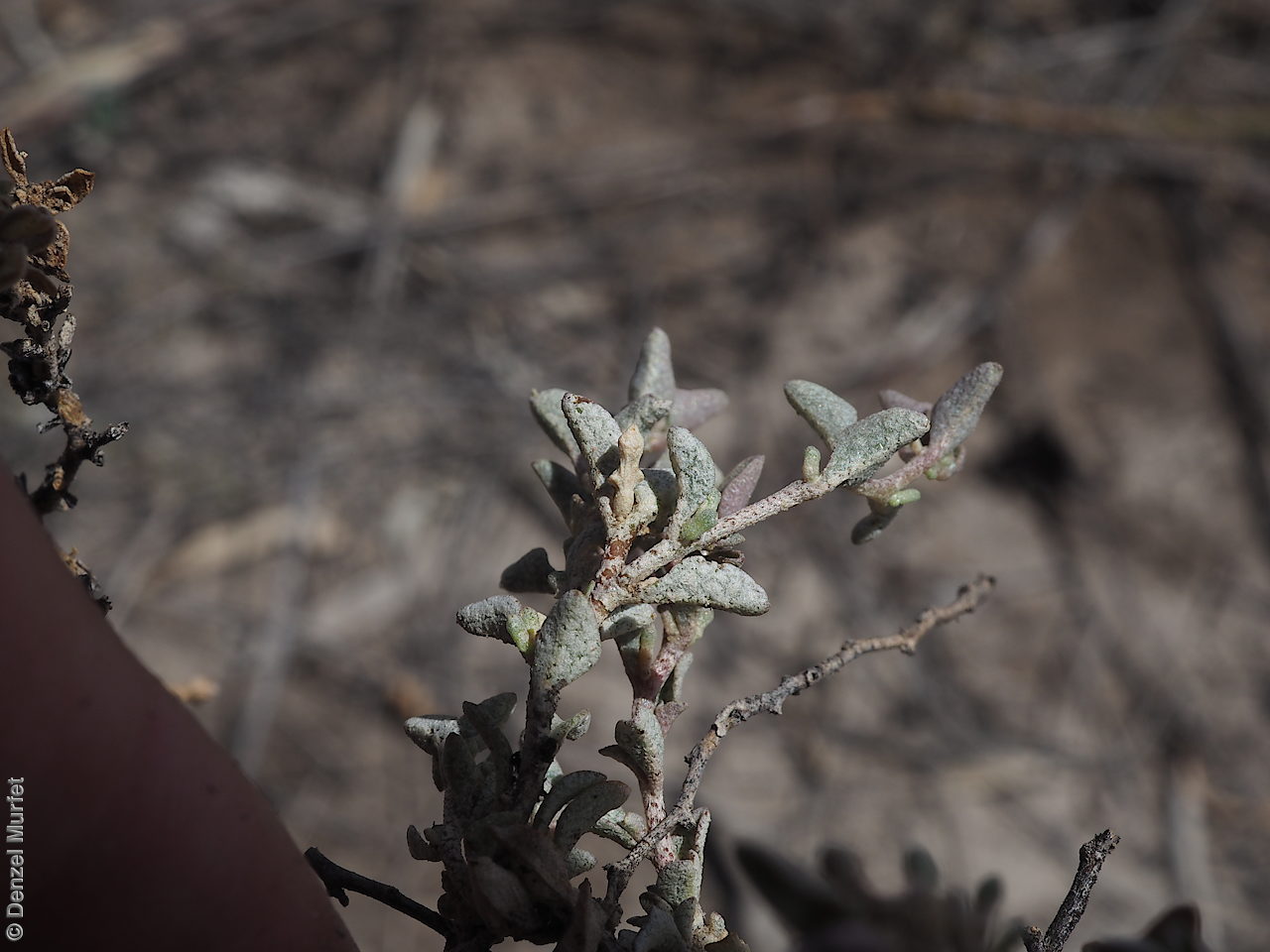
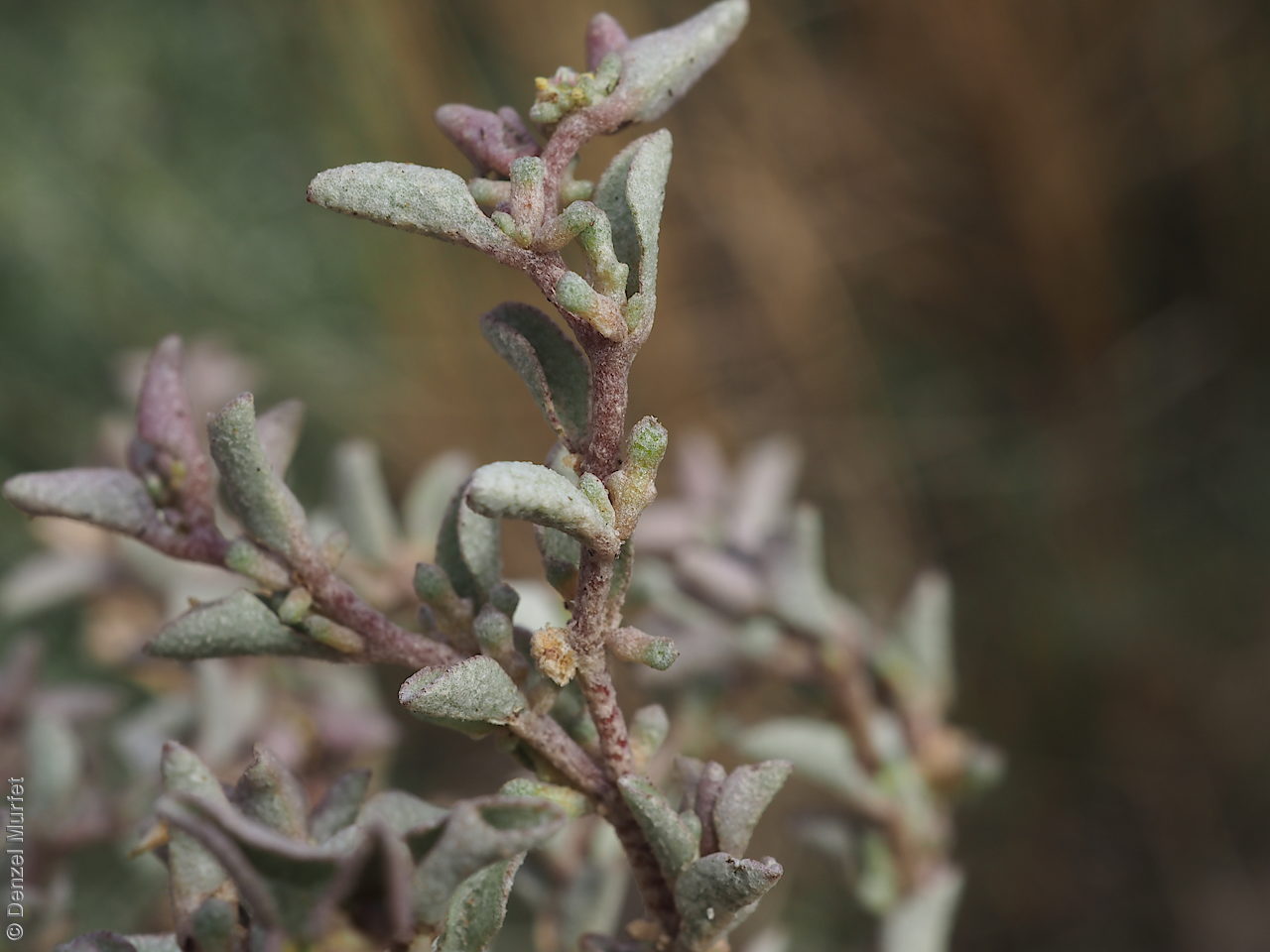

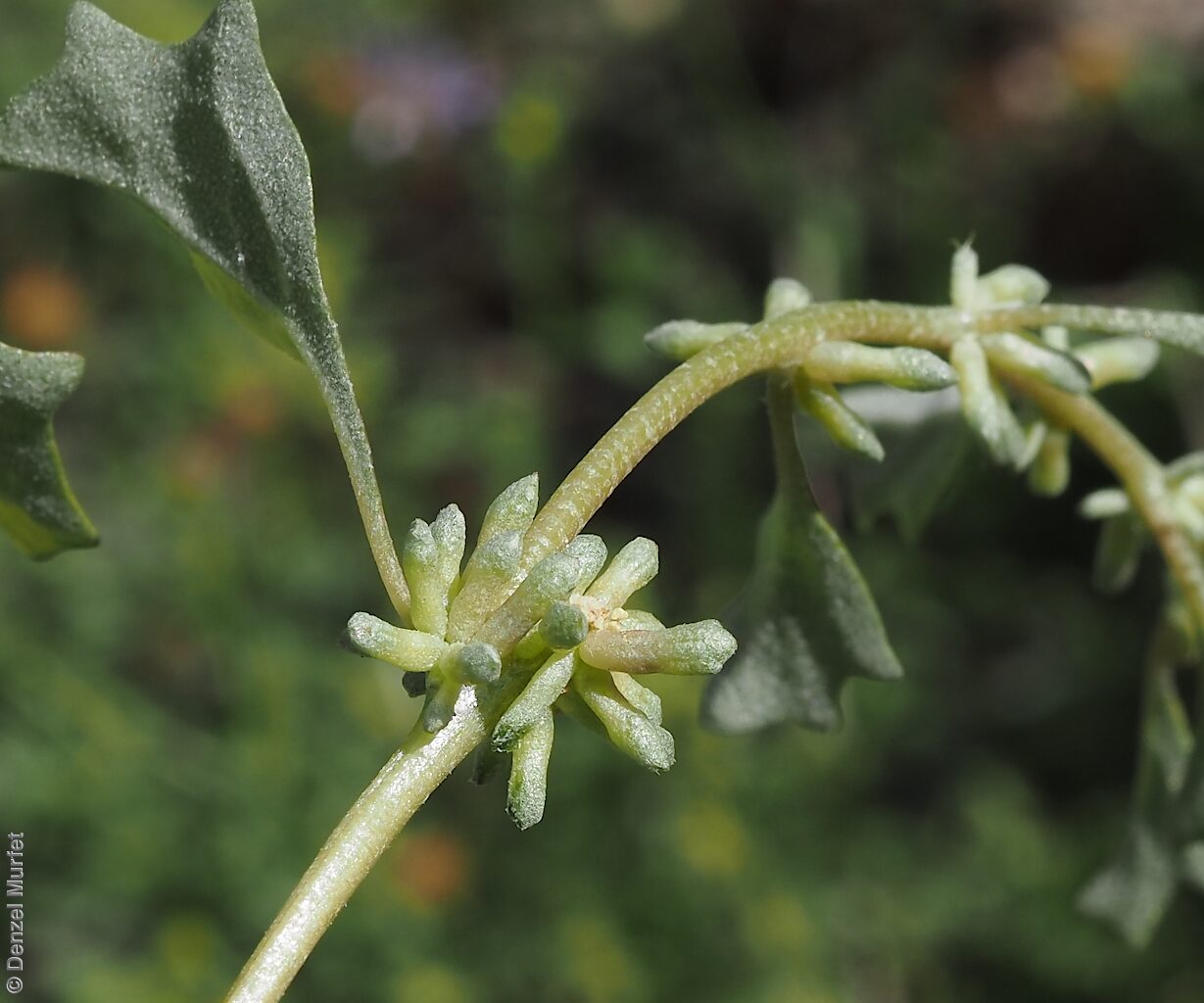

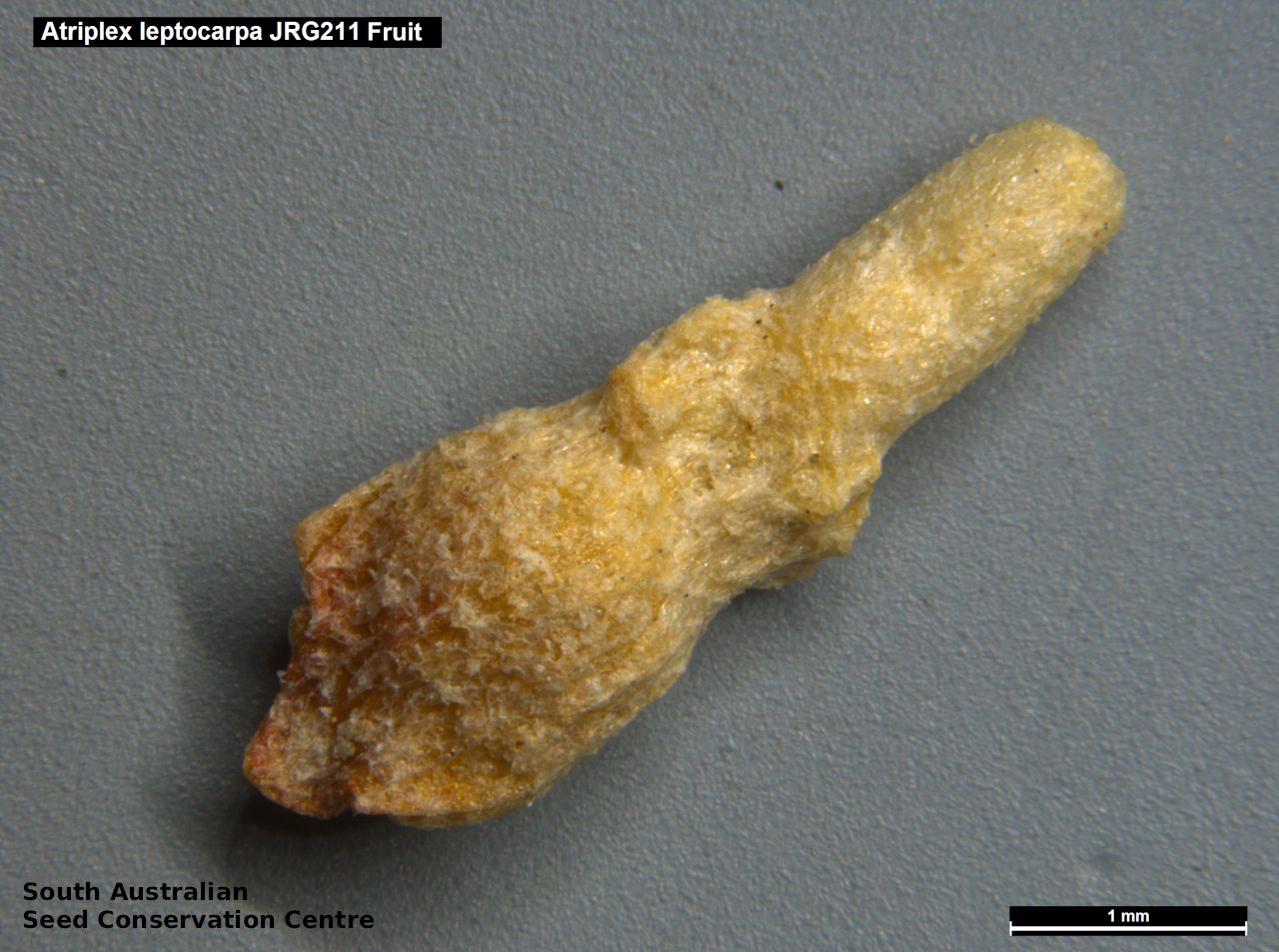

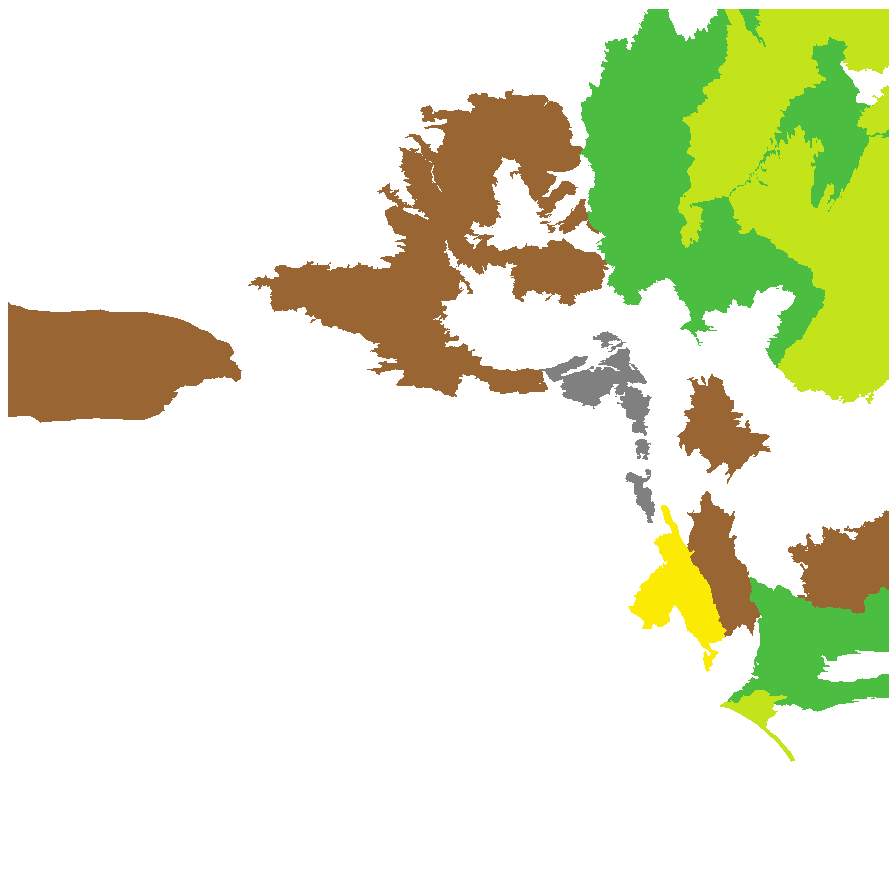
Botanical art
Prior names
Atriplex leptocarpa f. minor
Atriplex leptocarpa var. minor
Atriplex leptocarpa var. armata
Atriplex leptocarpa var. inermis
Atriplex leptocarpa var. leptocarpa
Atriplex sturtii
Etymology
Atriplex from the Latin 'atriplexum' meaning an orach, a saltbush, an Ancient Latin name for this plant. Leptocarpa from the Greek 'leptos' meaning narrow, slender and 'karpos' meaning fruit, referring to the fruit.
Distribution and status
Found across the eastern semi-arid regions of South Australia, growing on heavier, often saline soils in depressions, lake beds and river flats. Also found in Queensland, New South Wales and Victoria and introduced to Western Australia. Native. Common in South Australia. Common in the other states.
Herbarium regions: Lake Eyre, Nullarbor, Gairdner-Torrens, Eyre Peninsula, Northern Lofty, Murray, Southern Lofty, Green Adelaide
NRM regions: Adelaide and Mount Lofty Ranges, Alinytjara Wilurara, Eyre Peninsula, Northern and Yorke, South Australian Arid Lands, South Australian Murray-Darling Basin
AVH map: SA distribution map (external link)
Plant description
Monoecious, decumbent annual or short-lived perennial with slender spreading branches. Leaves narrow-elliptic to narrow-oblanceolate or rhomboid to 30 mm long and 8 mm wide, remotely dentate to entire, scaly on both surfaces. Flowers in axillary clusters. Flowering possible all year round. Fruiting bracteoles fused to the apex, cylindric except for the flattened, sometimes slightly dilated and obscurely 3-toothed apex, to 6 mm long and 2.5 mm wide overall, occasionally with small pointed tubercles near base. Seeds are brown, Ovoid. Seed embryo type is peripheral.
Seed collection and propagation
Collect seeds throughout the year. Collect ripe straw coloured fruits, check that they contain viable seeds. Fruits can be collected directly from the bush or from the ground underneath. Remove twigs and other plant material. Place the fruits in a tray and leave to dry for one to two weeks. No cleaning is required if only the fruits are collected. The seed can be stored in the fruit or can be cleaned further. Rub the fruit gently by hand to dislodge the seeds. Use a sieve to separate the unwanted material. Store the seeds with a desiccant such as dried silica beads or dry rice, in an air tight container in a cool and dry place. Seed viability can be high but seed availability can be low.